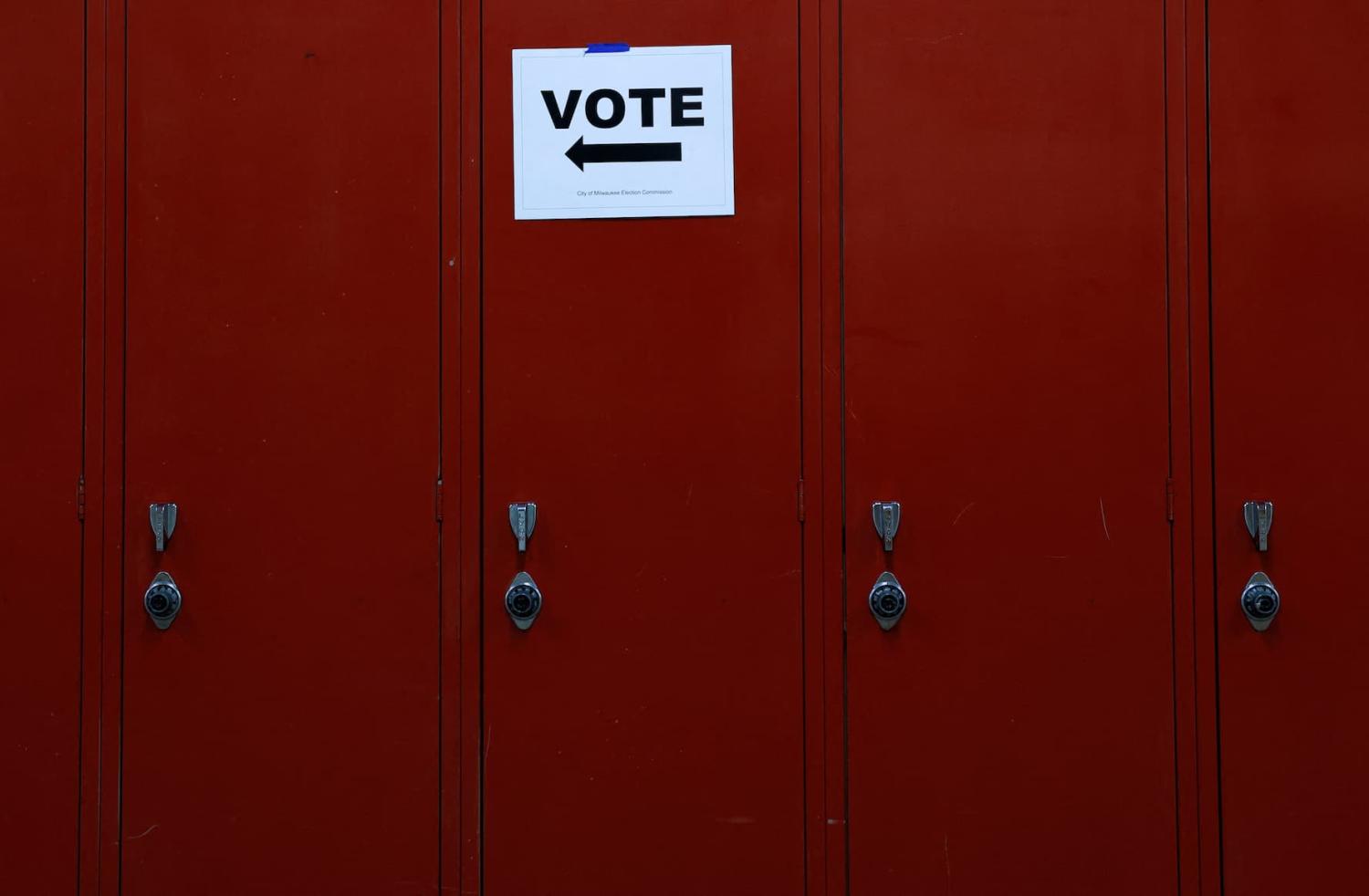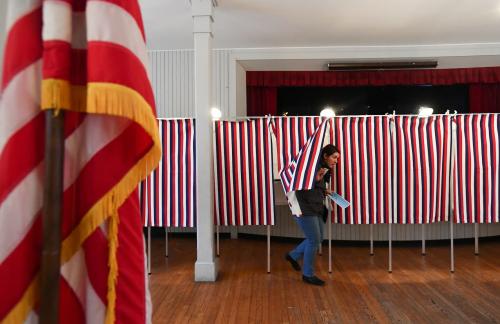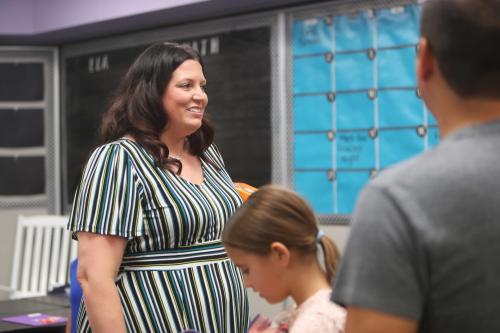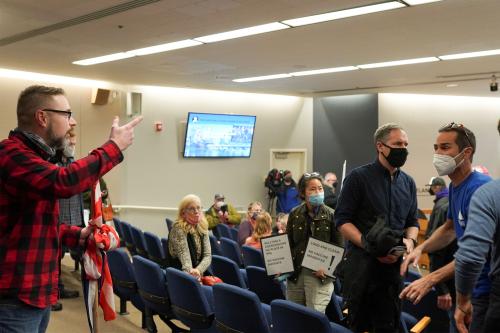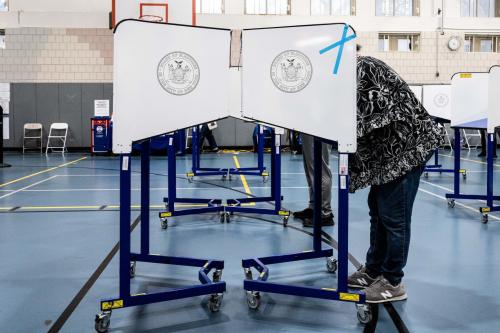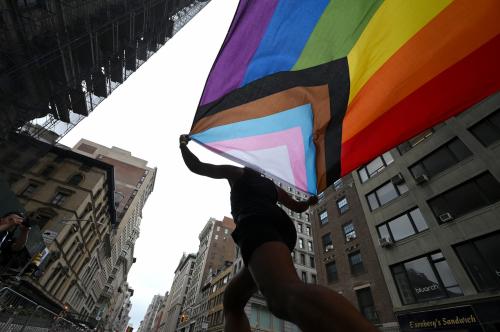Every two years, political campaigns, organizations, and pundits all ask the same question: Will young people turn out to vote? In recent cycles, that answer has been an emphatic yes: Youth ages 18-29, long considered unreliable voters, have turned out at historically high rates. Between the 2014 and 2018 midterms, and between the 2016 and 2020 presidential elections, youth voter turnout increased by double digits. In 2022, the first election when they made up the entire 18-24 age group, Gen Z voted at a higher rate than any previous generation in its first turn at the ballot.
That’s the good news. The bad news: Young people still vote at much lower rates than older Americans. Moreover, even among youth there are major inequities in turnout by race, education, rurality, and other factors that prevent us from having a truly representative electorate. In 2022, for example, the estimated voter turnout of Black (15%) and Latino (14%) youth was nearly 10 percentage points lower than that of youth overall. There was also a nearly 30-point gap between the voter turnout of youth with a Bachelor’s degree and those with a high school diploma but no college experience.
These systemic deficiencies in our democracy require equally structural shifts in how we prepare young people to participate in democracy. At the Center for Information & Research on Civic Learning and Engagement (CIRCLE) at Tufts University, we’ve spent two decades studying various approaches to expanding the electorate and promoting inclusive civic participation.
CIRCLE research points to a major role for K-12 schools at the intersection of civic education and civic participation—a vision of the nonpartisan civic role of schools that can be met through well-implemented, evidenced-based policies and practices.
When implemented, state statutes can support students’ voter registration and engagement
Policies like automatic voter registration (AVR) and pre-registration have proven somewhat effective at improving youth registration rates. However, without thoughtful and inclusive implementation, they aren’t enough to substantially increase participation. There remains major untapped potential, especially with pre-registration. Schools are positioned to play a key (and nonpartisan) role in this pre-registration work before and after students turn 18.
All states have policies in the books that outline what K-12 schools can, should, and, in some cases, must do related to voter registration and education. These include statutes that mandate the provision of voter registration forms and activities in schools. A handful of states go even further, providing opportunities for young people to take a leadership role in their school or community’s voter registration efforts. Michigan, for example—which we estimate had the highest youth voter turnout in 2022—allows 16- and 17-year-olds to be appointed to the Board of Elections.
The vast majority of states also allow youth under 18 to serve as poll workers. This is an impactful but severely underutilized opportunity to engage young people in the electoral process while also serving their communities. Teachers and school leaders have an essential role to play here, too, by promoting and supporting this work with their students.
Nonpartisan teaching about elections can promote participation
Schools can also support nonpartisan voter education much more directly. Participation in democratic processes requires working knowledge, skills, and dispositions that must be learned—which means they must also be taught. CIRCLE research shows that nonpartisan instruction about elections, especially about the voting process itself, is effective but often sorely lacking.
Before the most recent presidential election, we asked young people whether they had been encouraged and/or taught how to vote while in high school. Those who said they remembered those educational experiences were more interested in the 2020 election, more knowledgeable about the voting process, and more likely to engage in other civic activities (though it’s unclear if this was a causal effect of their high school instruction).
But a third of youth said they had not been encouraged to vote in school, and half said they had not been taught how. More recent data also underscores that a lack of information about the voting process is still a major problem.
In CIRCLE’s 2022 survey, among youth who didn’t vote, more than one in five said they did not have enough information. Among youth who didn’t register to vote, 13% said it was because they didn’t know how to do it or had a problem with the forms. Young, unregistered Latinos were even more likely (25%) to cite those reasons for not registering—underscoring how disparities in information access might lead to lower participation.
Educators need resources and support to teach equitably about elections. Some of that help can come from coalitions like the Teaching for Democracy Alliance that provide materials and learning opportunities for teachers to engage in this work. The backing of administrators and district leaders is also key, especially as educators continue to face pushback about history and social studies content in schools.
State policymakers can play a role by passing civic education laws that mandate nonpartisan teaching about elections as a normal, expected part of the curriculum, and by ensuring adequate resources for implementation across all schools. That includes allocating funding for teachers’ professional development and for civic learning activities required by standards and legislation. For example, Massachusetts established and funded a Civics Project Trust Fund to assist with training, implementation, and evaluation of its civic education law, especially in school districts with a high rate of disadvantaged students.
Civic education must help youth develop their voice and see their role in democracy
While information is key to supporting youth participation, it’s often not enough to spur voting and broader engagement. This is especially the case among youth from historically marginalized communities and those who, sadly, may not see a role for themselves in our democracy. According to our 2022 survey, only 40% of youth (ages 18-29) said they feel well-qualified to participate in politics. Youth of color, youth ages 18-21, and those without college experience are even less likely to feel qualified.
Schools have a central role in ensuring that all students can develop their voices, build skills like collaborative decision-making, understand how institutions work, and explore different ways they can effect change. Well-implemented civic education policies and standards can advance these aims by mandating the use of evidence-based pedagogies like inquiry-based learning, discussion of current societal issues, and service learning.
Each of these instructional practices create opportunities for young people to speak and act together about the issues facing their communities and to make decisions that impact their experiences in and out of the classroom. CIRCLE’s recent research in Illinois, where middle schools are implementing this type of civic learning, finds these learning experiences are associated with a variety of positive civic outcomes. Notably, it also finds that while this type of civic education is often derided as partisan, it does not politicize students; it is teaching them how to think, not what to think.
Our Illinois research also highlighted the importance of opportunities to build youth voice and confidence outside the classroom. Students who are engaged in extracurriculars, who perceive a positive school climate, and who feel they have a say in their school communities also score better on civic outcomes. Policymakers and practitioners can support educators by improving support for opportunities like extracurricular activities and launching or expanding programs like participatory budgeting in schools that directly involve youth leadership.
A role for policy, practice, and partnership
CIRCLE’s research at the intersection of civic education and engagement highlights the importance of policies that can help grow voters. More so, it underscores the importance of thoughtful and equitable implementation of policies and opportunities so that all youth have access to them and feel supported in enjoying them.
That requires much more than simply having a law in the books—whether it’s a civic education standard or a voter registration statute. It calls for meaningful and supportive partnerships between educators, policymakers, practitioners, and other stakeholders in communities who have a role to play in ensuring all youth are ready to vote in 2024 and to lead in the decades to come.
The Brookings Institution is committed to quality, independence, and impact.
We are supported by a diverse array of funders. In line with our values and policies, each Brookings publication represents the sole views of its author(s).

